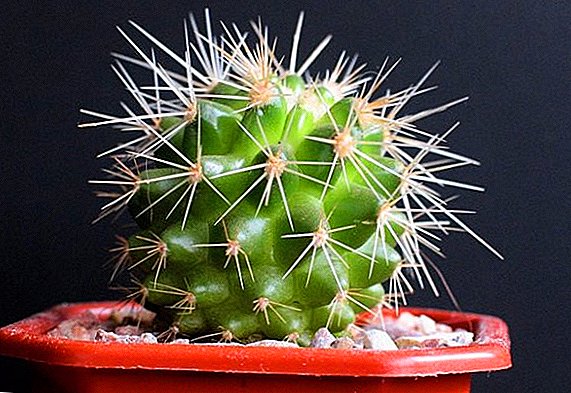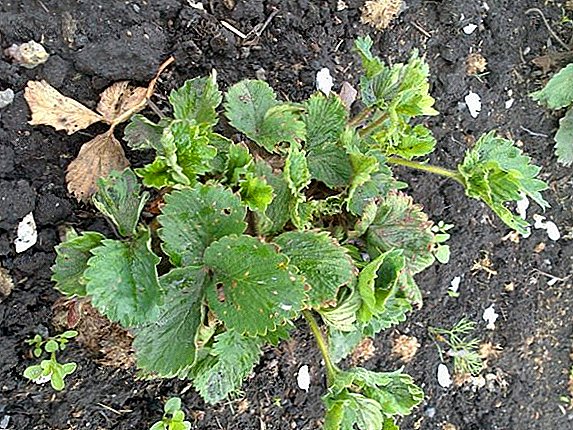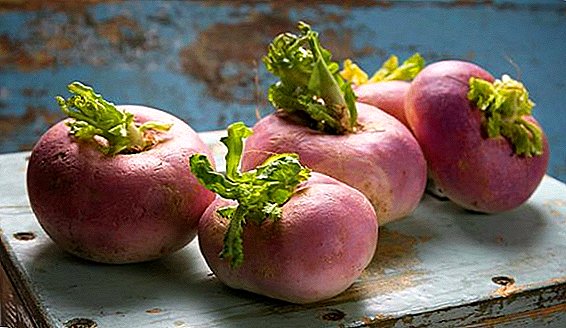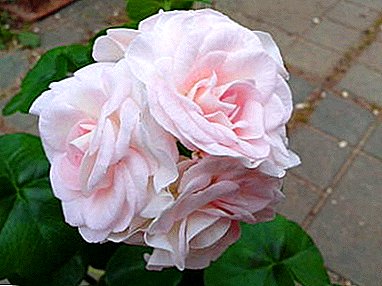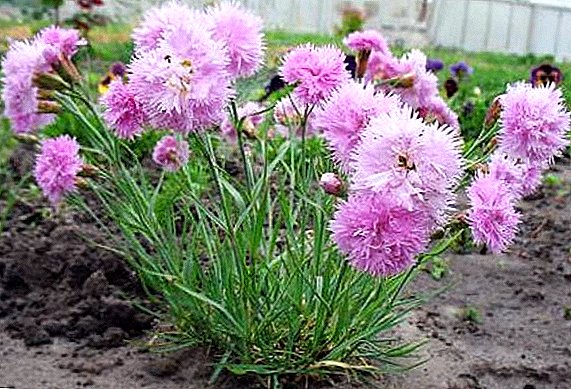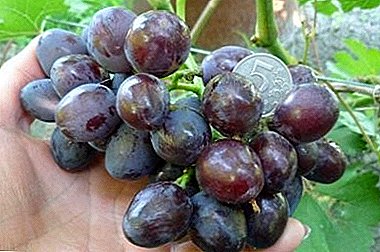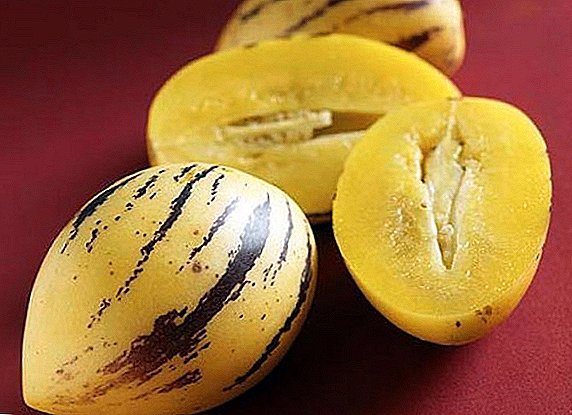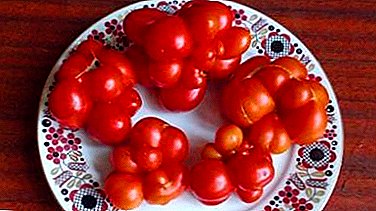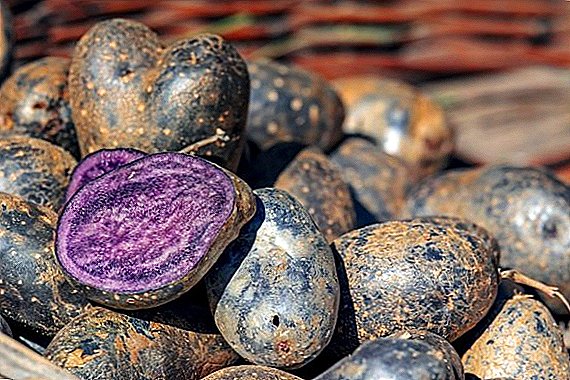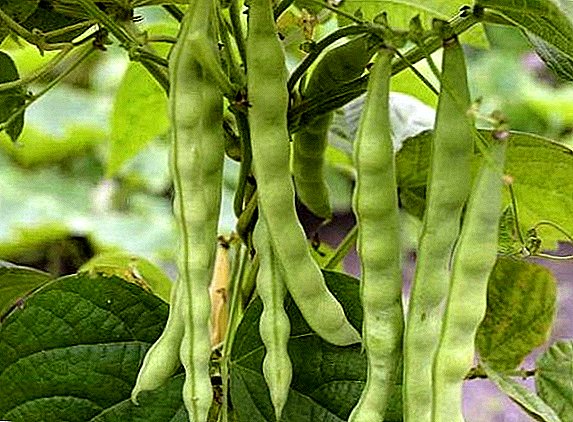 Recently, beans have become an increasingly popular product, as it is rich in many vitamins and minerals. By the amount of protein this vegetable is healthier than chicken meat. The unpretentiousness of the crop makes it attractive for cultivation in both farmland and dacha plots.
Recently, beans have become an increasingly popular product, as it is rich in many vitamins and minerals. By the amount of protein this vegetable is healthier than chicken meat. The unpretentiousness of the crop makes it attractive for cultivation in both farmland and dacha plots.
Vegetable beans: a description of garden crops
Haricot is a grass plant of the legume family. Beans are spray or curly, has a feathery form of leaves with stipules. Inflorescences are racemes, formed in the sinuses. The fruit is a bivalve pod, inside of which there are beans-beans divided by partitions. The shape of the beans and its color depends on the variety. Considered the most delicious vegetable, or bush beans, it is also called asparagus, because it can be eaten with a pod. The most popular varieties of vegetable beans:
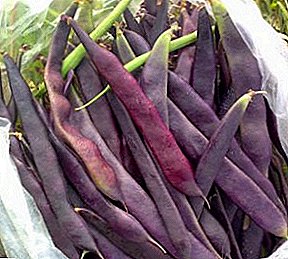 "Purple Queen" - the variety is immune to viruses and has a high yield, is a variety of medium ripening, the pods grow to 15 cm.
"Purple Queen" - the variety is immune to viruses and has a high yield, is a variety of medium ripening, the pods grow to 15 cm.- "Crane" - compact bush up to half a meter high, it has a delicate taste and pods without fibers.
- "Melody" - early-ripening variety, curly, pods flat, up to 13 cm in length.
- "The Oil King" - a fruitful, unpretentious grade of haricot of beans in cultivation, possesses delicious delicate taste.
- "Hell Rem" - Curly beans, different mushroom flavor and pink grains.
Did you know? The inhabitants of foggy Albion are famous for their prim restraint and simply Olympic calmness. It turns out that in the UK they use beans more than the inhabitants of all of Europe combined. Beans are often recommended for people with nervous disorders, as this is an excellent sedative of the nervous system.
Where is the best place to plant beans, the choice of location on the site
Many gardeners prefer to grow beans around fruit trees. Plants are really suitable for a place protected from drafts, preferably sunny, with nutrient soil and deep passage of groundwater.
Bean predecessors
In the farming of beans, it is important to choose the right predecessors. The best for the culture will be: cabbage, tomatoes, eggplants, peppers, cucumbers and potatoes. Good for beans will be the neighborhood with beets, onions, carrots.
Important! Planting beans after other legumes is recommended no earlier than four years later.
Requirements for soil for planting
 Beans do not develop on heavy clay soils, with poor drainage and high nitrogen saturation - the plant is able to extract the amount of nitrogen it needs from the air. The best yield of beans can be achieved on well-drained, light and fertile soil. Three days before sowing, the soil under the beans is dug up, if necessary, fertilized with compost or rotted manure. If the ground is heavy, make sand (per square meter - half a bucket). Then the soil is raked. The fertilized and prepared bed is watered with a solution of potassium permanganate for disinfection.
Beans do not develop on heavy clay soils, with poor drainage and high nitrogen saturation - the plant is able to extract the amount of nitrogen it needs from the air. The best yield of beans can be achieved on well-drained, light and fertile soil. Three days before sowing, the soil under the beans is dug up, if necessary, fertilized with compost or rotted manure. If the ground is heavy, make sand (per square meter - half a bucket). Then the soil is raked. The fertilized and prepared bed is watered with a solution of potassium permanganate for disinfection.
Is the bean demanding lighting?
If the beans to what and demanding, then it is to good lighting, it needs for good growth and development. Light culture needs twelve hours a day. If the plant grows in the illuminated area, then it is quite enough of daylight hours.
How to plant beans in the country: a description of the process of planting
Before sowing the beans, the seeds must be soaked in water overnight. Before soaking, carefully reassemble, discarding those unsuitable for planting, then, just before planting, hold for five minutes in a solution of boric acid: 1 gram per five liters of water. Such disinfection will protect the beans from pests and fungal infections.
Landing time
 When sowing beans, flowering chestnuts will prompt: they bloom when the threat of frost has passed and the soil is sufficiently heated, about 12 degrees to a depth of 10 cm. The curling beans are planted seven days later than the shrub erect. Vegetables can be sown for several crops from May to the first decade of July.
When sowing beans, flowering chestnuts will prompt: they bloom when the threat of frost has passed and the soil is sufficiently heated, about 12 degrees to a depth of 10 cm. The curling beans are planted seven days later than the shrub erect. Vegetables can be sown for several crops from May to the first decade of July.
Landing process
Sowing beans in the country is as follows:
- Bush varieties - depth up to 6 cm, the distance between plants up to 25 cm, the distance between rows up to 40 cm;
- Curly varieties - the depth is the same, the distance between the bushes is up to 30 cm, the aisle distance is up to 50 cm.
Bean care in the garden
Proper and timely care is the basic rule of how to grow a good harvest of beans. Culture needs watering, feeding, proper care of the soil; if it is a climbing variety, it is also in the garter, as well as in pinching the tips of the shoots for better development of both the shoots and the fruits.
Watering beans
Before the beans form buds, it is watered no more than twice a week, according to the condition of the soil - it must be moistened. With the formation of five strong leaves, watering is stopped for a while. As soon as the plant has bloomed, watering is resumed, gradually increasing twice.
Attention! Beans like rainwater, it is recommended in the absence of such, to defend tap water for at least a day.

Features feeding the beans in the open field
When the first strong leaf is formed, the plant receives the first top-dressing of superphosphate at the rate of 30 g per square meter. The next fertilizer for beans - potassium salt (15 g per square meter) - is made during the formation of buds.
Important! It is undesirable to feed the beans with nitrogen fertilizers, she produces them herself, and the excess will lead to a strong growth of green mass to the detriment of the fruits.
Soil care
One of the equally important conditions for the cultivation of beans is the care of the soil. The first loosening procedure is needed when the plant reaches a height of 7 cm. The second time loosening with hilling is carried out after 14 days. The third time is loosened and spud before closing the rows of adult plants. During dry periods, the trunk circle of the bush mulch to preserve moisture and protect the roots from overheating. Weeding from weeds is carried out regularly.
Interesting! In Bulgaria, they love beans so much that they arrange a holiday in her honor. Every November, a bean cannon shot ceremony takes place; guests of the holiday are treated to various dishes made from beans.
How to protect beans from pests and diseases
How to grow beans in the country and protect it from diseases and pests? The most common plant diseases are viral mosaic, anthracnose and bacteriosis. Unfortunately, it is impossible to fight the first one: if the plant is sick, it must be dug out and burned. This disease can be prevented by following the rules of agrotechnology, care and crop rotation.
 In the case of bacteriosis and anthracnose, fungicides can help, but the above rules must also be followed. Bordeaux liquid can be used as a means of struggle. As a preventive treatment, use "Fitosporin", processing is carried out twice: before flowering and after harvesting.
In the case of bacteriosis and anthracnose, fungicides can help, but the above rules must also be followed. Bordeaux liquid can be used as a means of struggle. As a preventive treatment, use "Fitosporin", processing is carried out twice: before flowering and after harvesting.
Bean pests are scoops and bean kernels. Prevent the appearance of the first can, if you carry out a deep digging of soil on the site. If prophylaxis does not help, treat the area with a solution of Bitoxibacillin or Gomelin. To prevent the emergence of grains, you need to soak and process the seeds of beans before sowing.
Harvesting Beans
Young beans can be eaten two weeks after the appearance of flowers. At the time, the pods are as large and tasty as possible. Gather the pods in the morning, cutting off with scissors. Young pods are consumed fresh - they are not stored for a long time. For the winter, these beans can be frozen or preserved.
 In the case of growing for grain, they wait until the pods dry out, then they are harvested by cutting off the stems. The stems are collected in bunches, hung in a dry room until the seeds mature completely. Then the beans are husked from the pods and stored in glass jars with lockable lids. Beans, which are used as planting material, are stored in the refrigerator.
In the case of growing for grain, they wait until the pods dry out, then they are harvested by cutting off the stems. The stems are collected in bunches, hung in a dry room until the seeds mature completely. Then the beans are husked from the pods and stored in glass jars with lockable lids. Beans, which are used as planting material, are stored in the refrigerator.
Beans - a nourishing product, it is well stored and not difficult to grow from seed. Compliance with several simple rules of planting and care will provide an opportunity to gather a healthy and tasty harvest.


 "Purple Queen" - the variety is immune to viruses and has a high yield, is a variety of medium ripening, the pods grow to 15 cm.
"Purple Queen" - the variety is immune to viruses and has a high yield, is a variety of medium ripening, the pods grow to 15 cm.